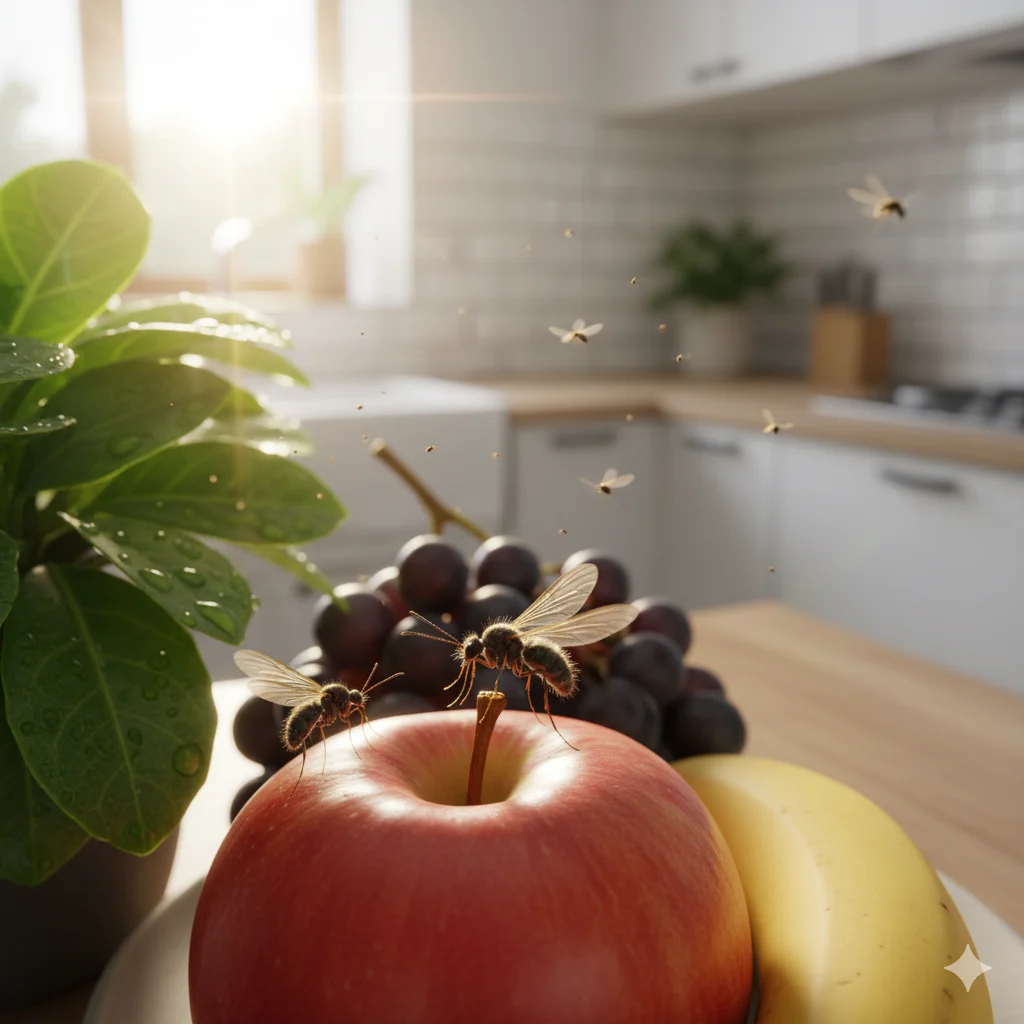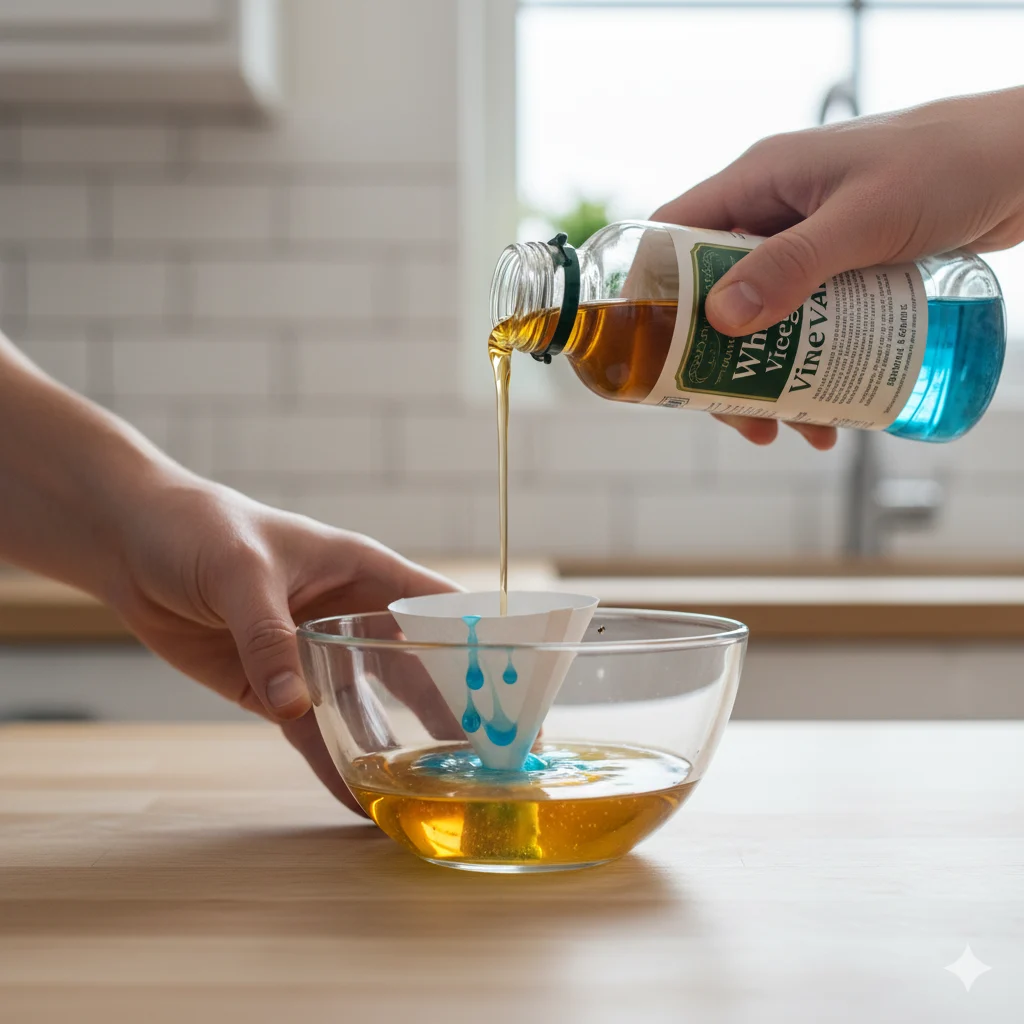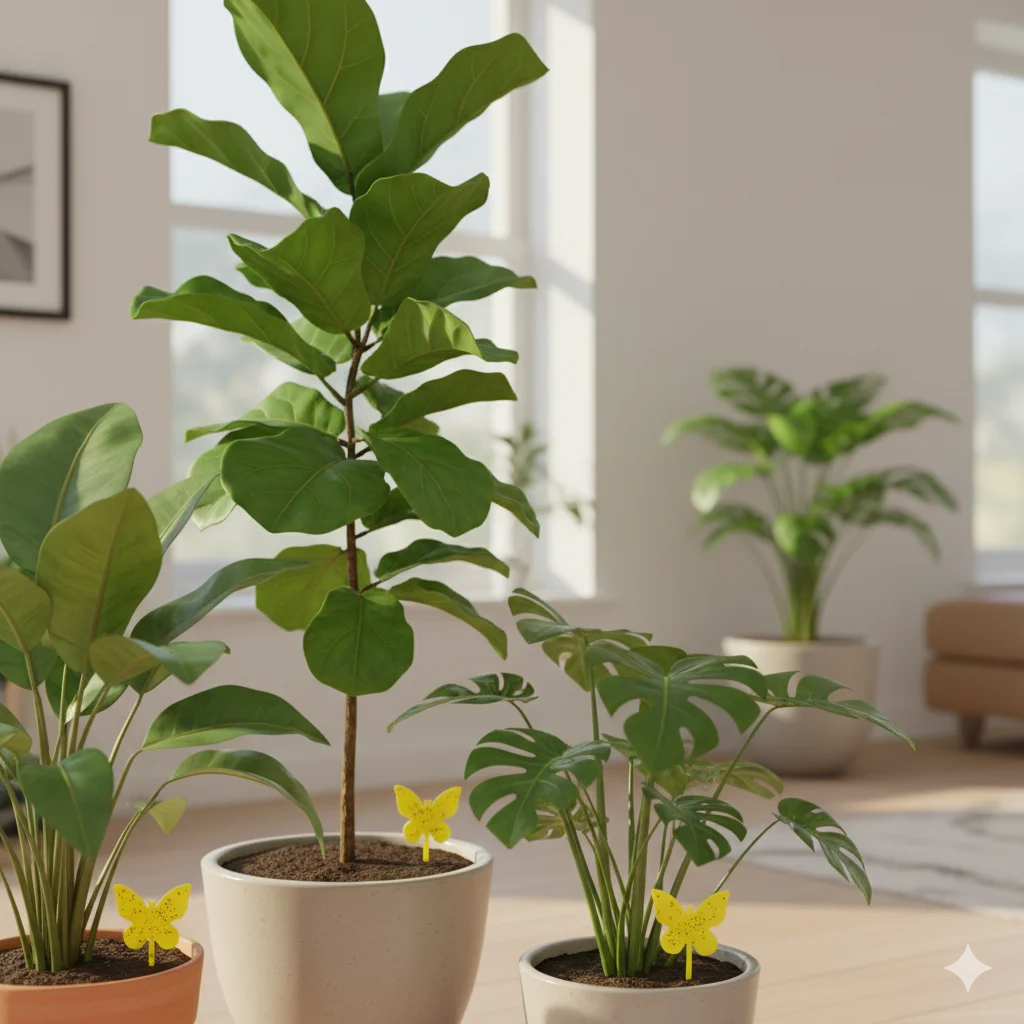Gnats — those tiny, buzzing pests — always seem to appear when you least expect them. One day your kitchen or bathroom looks spotless, and the next, small flying insects are swarming around fruit, drains, or plants.
The good news? You can get rid of gnats naturally, quickly, and permanently without harsh chemicals.
In this step-by-step guide, you’ll learn how to get rid of gnats at home, identify what kind of gnats you have, and use safe, effective remedies that actually work — all while keeping your home fresh and pest-free.
🪰 Understanding Gnats and Why They Appear
Before removing gnats, it’s important to know what’s attracting them. Gnats are tiny flying insects that thrive in moist, warm environments. They’re often mistaken for fruit flies, but they have different breeding habits and sources.
The three most common types of household gnats are:

- Fruit Gnats (Fruit Flies):
- Found near overripe fruit, trash cans, or sugary spills.
- Drain Gnats (Drain Flies):
- Breed in moist drains, pipes, and bathrooms.
- Fungus Gnats:
- Found in overwatered plant soil or organic compost.
Once you understand which type is invading your home, you can use the right removal method for long-lasting results.
🔍 How to Identify the Type of Gnats in Your Home
Each gnat species looks slightly different and prefers a unique environment. Here’s how to spot them:
| Type | Where Found | Attracted To | Best Treatment |
|---|---|---|---|
| Fruit Gnats | Kitchen, fruit baskets, trash bins | Ripe or rotten fruit, sugary liquids | Vinegar traps, cleaning spills |
| Drain Gnats | Sink, bathroom, shower drains | Moist sludge, soap scum | Drain cleaning with vinegar and baking soda |
| Fungus Gnats | Houseplants, flowerpots | Wet soil, rotting roots | Dry soil, sticky traps, neem oil spray |
💡 Tip: To find where gnats are breeding, place a small piece of overripe fruit in different rooms overnight. The area with the most gnats will reveal their source.
🧼 Step-by-Step: How to Get Rid of Gnats Indoors
These proven techniques will help you remove gnats from every corner of your home — safely and naturally.
🍎 Step 1: Find and Eliminate the Source
Gnats always come from a breeding spot. Start by checking these common problem areas:
- Kitchen counters and fruit bowls
- Garbage bins and recycling areas
- Sink drains and bathroom floors
- Damp rags, sponges, and mops
- Pet food dishes or litter boxes
- Overwatered plant pots
Once you identify the source, clean it with warm water and vinegar or a mild disinfectant. Dispose of garbage immediately and wash fruit bowls thoroughly.
🍯 Step 2: Make a Vinegar and Dish Soap Trap
A homemade vinegar trap is one of the easiest and most effective ways to catch gnats.

You’ll need:
- ½ cup apple cider vinegar
- A few drops of dish soap
- A small bowl or glass
How to make it:
- Pour vinegar into the bowl.
- Add dish soap and mix gently.
- Leave it uncovered near the infested area.
The gnats will be attracted to the vinegar but sink because the soap breaks the liquid’s surface tension. Replace the trap every 2–3 days until the problem is gone.
🚿 Step 3: Clean Drains to Remove Drain Gnats
Drain gnats love dirty or moist drains, especially in kitchens and bathrooms. You can clean them naturally with common household ingredients.
Steps:
- Pour ½ cup baking soda into the drain.
- Add 1 cup vinegar and let it fizz for 15 minutes.
- Flush the drain with boiling water.
Repeat daily for several days to kill eggs and larvae. You can also use a drain brush to scrub deeper sludge.
💬 Pro Tip: Cover your drain with plastic wrap overnight. If you find trapped gnats underneath in the morning, you’ve located their breeding ground.
🌱 Step 4: Remove Fungus Gnats from Houseplants
If gnats hover near indoor plants, your soil is likely too wet. Here’s how to treat it naturally:

- Let the top 2 inches of soil dry before watering again.
- Place yellow sticky traps near the plant base to catch adults.
- Sprinkle cinnamon powder on the soil — it prevents fungal growth.
- Water plants from the bottom to keep surface soil dry.
If the infestation is severe, repot with fresh, dry soil and wash the roots carefully.
🌿 Natural Remedy: Mix 1 teaspoon neem oil with 1 cup water and spray over the soil once a week. It kills larvae without harming your plants.
🧴 Step 5: Use Natural Gnat Repellents
If you still see a few gnats flying around, use natural repellents to discourage them.
✅ Best natural repellents:
- Lemon and clove: Cut a lemon, insert cloves, and place it near problem areas.
- Essential oils: Mix peppermint, eucalyptus, or lavender oil with water in a spray bottle.
- Vinegar and water spray: Equal parts vinegar and water with a few drops of dish soap.
These mixtures repel gnats effectively without chemicals, making them safe for kitchens and homes with pets.
🧽 Step 6: Deep Clean and Maintain Hygiene
Even after eliminating the source, prevention is key. Keep your home gnat-free by maintaining a consistent cleaning routine:
- Wipe down kitchen counters and tables daily.
- Empty trash bins frequently and keep them covered.
- Clean dishcloths and sponges regularly.
- Don’t leave dirty dishes or wet rags overnight.
- Keep sink strainers and drains clear of debris.
- Store ripe fruits in the refrigerator, not on counters.
✨ Remember: Cleanliness breaks the gnat life cycle and prevents re-infestation.
🌼 Prevent Future Gnat Infestations
Once you’ve gotten rid of gnats, it’s important to prevent their return. Here’s how:

- Fix any leaks in pipes or faucets — moisture attracts gnats.
- Use sealed containers for garbage and compost.
- Avoid overwatering your plants.
- Clean drains weekly with vinegar and baking soda.
- Cover fruits and food items when not in use.
- Install window screens to keep outdoor gnats from entering.
These small habits make a huge difference and maintain a gnat-free environment long-term.
🧠 Natural Remedies vs Chemical Sprays
Wondering whether you should use natural solutions or insect sprays? Here’s a quick comparison:
| Method | Pros | Cons |
|---|---|---|
| Natural Remedies (vinegar, oils, traps) | Safe, eco-friendly, low-cost | Takes a few days to fully work |
| Chemical Sprays | Quick kill | Can harm air quality, unsafe for pets |
| Professional Pest Control | Ideal for severe infestations | Expensive, may need prep time |
For most household cases, natural home remedies are safer and more sustainable. Reserve chemical options only if gnats persist after several weeks of cleaning.
🧾 Quick Gnat Removal Checklist
✔ Identify the type of gnat (fruit, drain, or fungus)
✔ Find and clean the source area
✔ Set up apple cider vinegar traps
✔ Clean drains naturally with baking soda and vinegar
✔ Let plant soil dry between watering
✔ Keep kitchen and bathroom areas dry
✔ Repeat for 7–10 days for full results
This checklist helps you track your cleaning process — consistency is what eliminates gnats for good.
⚠️ Why Gnats Keep Coming Back
If you’ve removed gnats but they return within a week, one of these might be the reason:
- Moist drains or wet rags weren’t cleaned properly.
- Fruit or compost bins weren’t sealed.
- Houseplants stayed damp too long.
- Trash wasn’t taken out frequently.
Gnats can lay up to 300 eggs at a time, so one missed source can restart the cycle. Keep up your cleaning routine even after they disappear to stop re-infestation.
🌿 Final Thoughts
Gnats are frustrating but entirely manageable once you understand their habits. With the right combination of cleaning, natural traps, and prevention, you can clear your home and keep it fresh year-round.
Focus on these three golden rules:
- Find and clean the source — always the first step.
- Use natural traps and repellents for safety.
- Maintain daily hygiene to prevent their return.
By following these methods, you’ll not only get rid of gnats permanently but also create a healthier and cleaner home environment. 🌸










